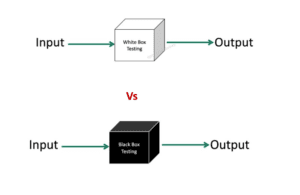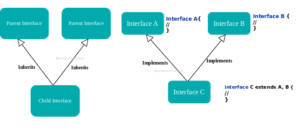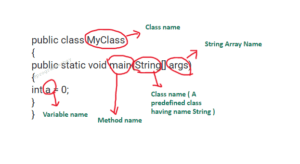In Software testing, both are the testing techniques used to ensure the working of software as per the software requirement and specification. However, the main difference between them is, Black box testing mainly focuses on software behavior, whereas, White box testing mainly focuses on the internal operational flow or working of the software.
Black Box Testing
In black-box testing, the tester is not aware of the internal working and mechanics of the software system. This type of testing has an end-user appeal to it and the focus of this testing is more on the inputs and outputs obtained.
This technique uses software requirements and specifications as the base to drive test cases. It can be employed on every level of testing such as unit, integration, and system testing. The tester provides some input and expects a desirable output to verify the expected behavior of the software application. Therefore, it is also termed as Behavioral Testing
A Black Box Testing can be classified into three types, namely functional testing, non-functional testing, and regression testing.
Functional Testing: For functional requirements that involves testing of APIs ( such as Login, Payment Gateway), Database, GUI, and more.
Non-Functional Testing: For Non-Functional Requirements that involves testing of performance, scalability, and more
Regression Testing: It is done after any changes or update made in software to verify previously tested code is still working properly.
Equivalence Class Technique, Decision Tables Technique, Boundary Value Technique are some of the testing techniques that fall under the category of Black Box Testing.
White Box Testing
In white-box testing, the tester is well aware of the internal functioning and working of the software system. This type of testing is based upon checking each and every block of code and every possible condition. This nature of the testing acts like transparent testing, unlike the other testing methods.
In this, a tester examines the code of a software application in order to ensure the internal structures are implemented properly as per the software specification.
Statement Coverage, Decision Coverage, Condition Coverage are some of the testing techniques that fall under the category of White Box Testing.
Difference Between White Box Testing And Black Box Testing In Tabular Form :
| Black box testing | White box testing |
|---|---|
| Internal behaviour of the software is always unknown | Internal behaviour of the software is known |
| It is High-level testing | It is Low level testing |
| Ideal for acceptance testing and system testing | Ideal for integration testing and unit testing |
| No need to have any knowledge pertaining to coding / programming | Should have prior knowledge pertaining to coding / programming |
| Less time consuming | More time consuming |
| Also known as Behavioural testing | Also known as Structural testing |
| Done by Tester | Done by Programmer |
| Implementation Knowledge isn't required | Implementation Knowledge is required |
| Decision table testing, Equivalence partitioning and Cause–effect graph are some of the techniques that are used | Statement Coverage and Branch coverage are some of the techniques that are used |
| Requirement specification is used as the base for test cases | Detailed design is used as the base for test cases |
| It mainly focuses on the software functionality | It mainly focuses on internal working of software |
| Functional, Non-functional and regression testing are the types of Black box testing | Condition Testing, Loop Testing and Path Testing are the types of White box testing |
Key Differences:
- TESTING BASIS
In the case of black-box testing, the internal behavior of the software is always unknown while the emphasis is on the external factors like input and output; whereas; in the case of white-box testing, the internal behavior of the software is known and the tester can test each every part of the code.
- TYPE OF TESTING
When we talk about black-box testing, since we are not concerned about internal working, that’s why, it is High-level testing; whereas; when we talk about white box testing, as we are aware of the internal functionality of the code, that’s why it is Low-level testing.
- IDEAL USAGE
For the scenario related to Black box testing, as this testing is considered as higher level; this makes it ideal for acceptance testing and system testing; while; for the scenario related to white box testing, as this testing is considered as low level; this makes it ideal for integration testing and unit testing.
- PROGRAM RELATED KNOWLEDGE
In the case of black-box testing, there is no need for the tester to have any knowledge pertaining to coding/programming; whereas; in the case of white-box testing, there is a prerequisite for the tester to have prior knowledge pertaining to coding/programming.
- GRANULARITY
When we talk about black-box testing, this type of testing has very low granularity; whereas; when we talk about white box testing, this type of testing has quite high granularity.
- TIME CONSUMPTION
If we consider the black box testing then, this testing is much less time consuming and also less exhaustive; whereas; if we consider white box testing then, this testing is much more time consuming and also more exhausting.
- OTHER NAME
Black box testing is also termed as Behavioural testing, whereas White box testing also referred as Structural testing




